𝘼𝙧𝙚 𝙮𝙤𝙪 𝙥𝙡𝙖𝙣𝙣𝙞𝙣𝙜 𝙖 𝙩𝙧𝙞𝙥 𝙩𝙤 𝙆𝙚𝙧𝙖𝙡𝙖 𝙖𝙣𝙙 𝙬𝙤𝙣𝙙𝙚𝙧𝙞𝙣𝙜 𝙬𝙝𝙚𝙩𝙝𝙚𝙧 𝙆𝙤𝙘𝙝𝙞 (𝘾𝙤𝙘𝙝𝙞𝙣) 𝙞𝙨 𝙬𝙤𝙧𝙩𝙝 𝙫𝙞𝙨𝙞𝙩𝙞𝙣𝙜 𝙤𝙧 𝙣𝙤𝙩? 𝙍𝙚𝙖𝙙 𝙢𝙮 𝙘𝙤𝙢𝙥𝙡𝙚𝙩𝙚 𝙩𝙧𝙖𝙫𝙚𝙡 𝙜𝙪𝙞𝙙𝙚 𝙖𝙣𝙨𝙬𝙚𝙧𝙞𝙣𝙜 𝙖𝙡𝙡 𝙮𝙤𝙪𝙧 𝙦𝙪𝙚𝙨𝙩𝙞𝙤𝙣𝙨, 𝙞𝙣𝙘𝙡𝙪𝙙𝙞𝙣𝙜 𝙩𝙝𝙚 𝙗𝙚𝙨𝙩 𝙥𝙡𝙖𝙘𝙚𝙨 𝙩𝙤 𝙫𝙞𝙨𝙞𝙩 𝙞𝙣 𝙆𝙤𝙘𝙝𝙞 𝙖𝙣𝙙 𝙁𝙤𝙧𝙩 𝙆𝙤𝙘𝙝𝙞, 𝙬𝙝𝙚𝙧𝙚 𝙩𝙤 𝙨𝙩𝙖𝙮, 𝙚𝙖𝙩, 𝙖𝙣𝙙 𝙬𝙝𝙚𝙣 𝙩𝙤 𝙜𝙤.
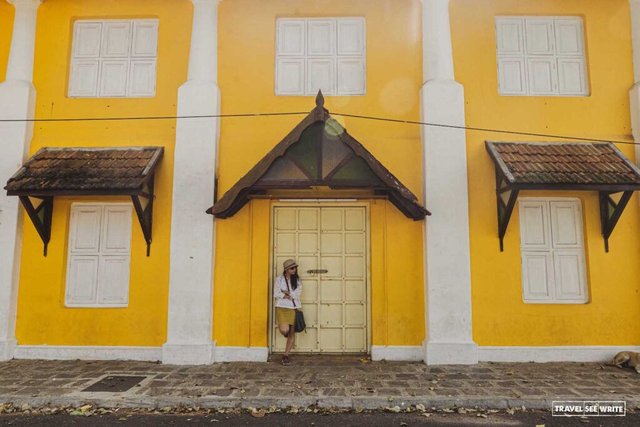
After spending a week in two different destinations – Bangalore and Coorg – I thought I had experienced two very unique holidays. Nothing could match them in my two-week-long South India Trip. Still, both Fort Kochi and Kumarakom exceeded my expectations. In this post, I’ll tell you why I fell in love with Kochi and what are the best things to do in Kochi in 2 days.
𝗜𝘀 𝗙𝗼𝗿𝘁 𝗞𝗼𝗰𝗵𝗶 𝘄𝗼𝗿𝘁𝗵 𝘃𝗶𝘀𝗶𝘁𝗶𝗻𝗴?
This was a question that grappled my mind when planning my trip to . I wanted to know what’s special about Kochi that makes it a must-visit destination in Kerala. I must admit Kochi, also known as Cochin, is one of the most picturesque destinations on the southwest coastline of Kerala. Known as the Queen of the Arabian Sea, the city also flaunts one of the world’s finest natural harbours. And, why wouldn’t it? After all, it has been the centre of the world spice trade for many centuries. Old Kochi (presently called West Kochi) loosely refers to a group of islands which comprise Fort Kochi, Mattancherry, and Willingdon Island, among others. Fort Kochi is a small fishing village that became the first European township in India, where you can still see the vestiges of several cultures and ethnicities.
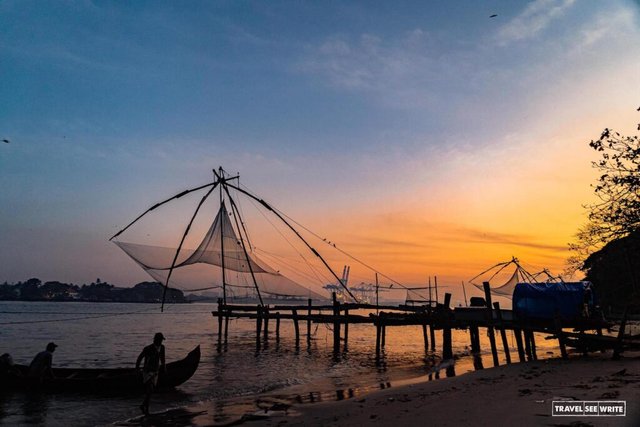
The city is also referred to as the gateway of Kerala because whether you plan to go to Alleppey, Thekkady or Munnar, your starting point will most likely be Kochi. And, if you want to go to Lakshadweep, your journey will also begin at Kochi. Therefore it makes sense to start at least a day or two here. There are many things to do in Fort Kochi, so here is a travel guide curated by me to help you plan your time in this historic city.
Fort Kochi is a cultural vessel shaped by many historical influences dating back to 2000 years. Its streets exude that old-world charm. The Jewish, Arabs, British, Chinese, Dutch, and Portuguese all impacted the history and development of Cochin. At Kochi, you see a hodgepodge of cultures and traditions co-existing with ease – whether the Catholics of Kerala, Kashmiris, Jews, Konkanis, Gujaratis or Marwaris. The English claimed Cochin as “Mini England”, The Dutch called it “Homely Holland’Holland’ and the Portuguese referred to the port as “Little Lisbon”.
𝗪𝗵𝗲𝗻 𝗶𝘀 𝘁𝗵𝗲 𝗯𝗲𝘀𝘁 𝘁𝗶𝗺𝗲 𝘁𝗼 𝘃𝗶𝘀𝗶𝘁 𝗞𝗼𝗰𝗵𝗶?
The best time to visit Kochi depends on your interests and what you are looking for in your travels. Most people prefer to visit between October and March as the weather is quite pleasant, ranging from 17 to 33 degrees Celsius. I was there at the beginning of March, and it was quite pleasant to explore the town on foot. But suppose you are someone who doesn’t mind the heat and humidity. In that case, you can visit between April to June when the average temperature ranges from 20 to 37 degrees Celsius. The best part, it is a lean season, which means you can get better hotel deals. Lastly, plan your trip between July and September if you love the monsoon. The average temperature is between 24 to 27 degrees Celsius, and the city turns green. Also, a great time to get good hotel deals.
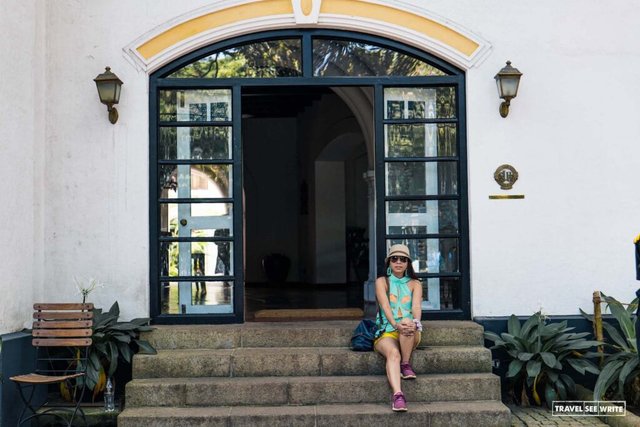
𝗛𝗼𝘄 𝗺𝗮𝗻𝘆 𝗱𝗮𝘆𝘀 𝗮𝗿𝗲 𝗲𝗻𝗼𝘂𝗴𝗵 𝗳𝗼𝗿 𝗞𝗼𝗰𝗵𝗶?
If you are interested in exploring just the city’s historical side, then I would say two days are enough for Kochi. But if you have time and want to explore the city and around at a slow pace, then 5-7 days should be good. I had two days in hand, and I could explore quite a bit in those two days. But the credit goes to Forte Kochi staff, who put an excellent itinerary for me that was neither too rushed nor too relaxed to miss out on any of the best places to visit in Kochi in 2 days.
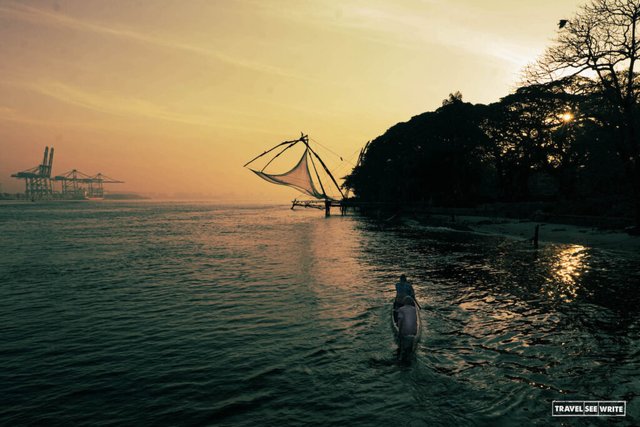
𝗪𝗵𝗮𝘁 𝗮𝗿𝗲 𝘁𝗵𝗲 𝗯𝗲𝘀𝘁 𝘁𝗵𝗶𝗻𝗴𝘀 𝘁𝗼 𝗱𝗼 𝗶𝗻 𝗞𝗼𝗰𝗵𝗶 𝗶𝗻 𝟮 𝗱𝗮𝘆𝘀?
Kochi is like a treasure trove filled with a historical and cultural richness reflected in its architectural marvels from different eras. I had a fantastic guide called Vijesh from Day in Cochin Tours who made me experience the heart and soul of Fort Kochi and Mattancherry. Here are some of the places worth checking out if you are looking for ideas on how to spend 48 Hours in Kochi.
𝗟𝗲𝗮𝗿𝗻 𝘁𝗵𝗲 𝗼𝗹𝗱 𝗳𝗶𝘀𝗵𝗶𝗻𝗴 𝘁𝗲𝗰𝗵𝗻𝗶𝗾𝘂𝗲 𝗮𝘁 𝘁𝗵𝗲 𝗖𝗵𝗶𝗻𝗲𝘀𝗲 𝗙𝗶𝘀𝗵𝗶𝗻𝗴 𝗡𝗲𝘁𝘀.
The Chinese Fishing Nets are the most popular tourist sights in Kochi, so if you are only making a one day trip to Kochi, this should be number one on your list of things to do in Fort Kochi. Vijesh, my travel guide, said, “Many believe the name Co-chin means like China. The Chinese explorers who landed here in the Portuguese era installed these fishing nets that have since become the symbol of the place.” It is believed the first Chinese Fishing Nets were installed in Fort Kochi in the 15th century, and they are still in use. Refurbished several times since then, but their technique is still the same that the first traders used. If you want to see that old technique of catching fish, just head to the Vasco da Gama Square, a narrow walkway that runs along the Fort Kochi beach. The best time to visit the Chinese Fishing Nets and Kochi Beach is during the sunset time when the entire area glows in the golden light. Usually, the fisherman would expect a tip of 100-200 rupees for letting you take pictures of their nets. As you step outside of the Chinese Fishing nets boats, you are greeted with stalls for food, local drinks, souvenirs etc. There are a few benches as well for sitting.
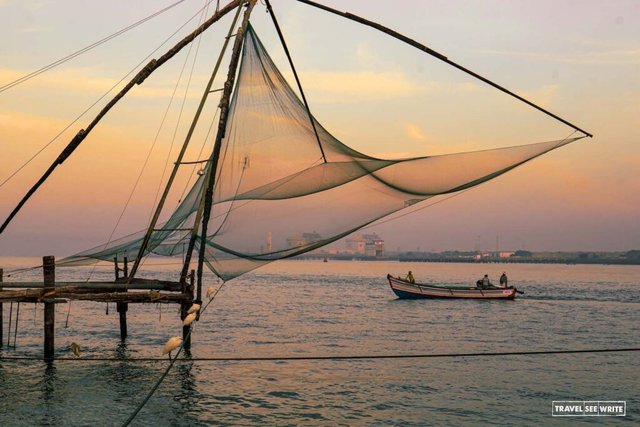
𝗠𝗮𝗿𝘃𝗲𝗹 𝗮 𝗴𝗹𝗼𝗿𝗶𝗼𝘂𝘀 𝘀𝘂𝗻𝘀𝗲𝘁 𝗮𝘁 𝗙𝗼𝗿𝘁 𝗞𝗼𝗰𝗵𝗶 𝗕𝗲𝗮𝗰𝗵
One of the most prominent Fort Kochi tourist places is Fort Kochi Beach, next to the Chinese Fishing Nets. Equally popular among tourists and locals for evening walks, this beach might be small but has many unique factors that differentiate it from other beaches in Kerala or Goa. The presence of the Chinese fishing nets is definitely a highlight. The presence of giant old trees and the greenery on the promenade adds to the serenity of the beach. The seafood, the Vasco da Gama Square adjacent to the beach, a lighthouse and a granite walkway are other attractions that make this place a must-visit place in Kochi. The remains of Fort Immanuel can also be seen here.
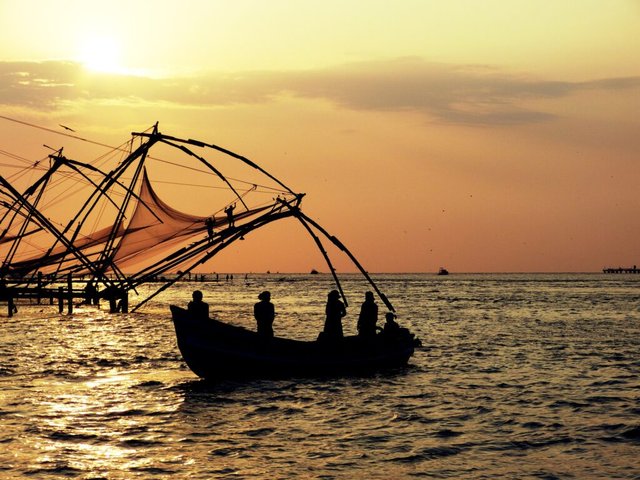
If you happen to travel to Kerala during the new year, don’t forget to attend the famous Cochin Carnival on New Year’s Eve.
𝗧𝘂𝗿𝗻 𝘁𝗵𝗲 𝗵𝗶𝘀𝘁𝗼𝗿𝘆 𝗽𝗮𝗴𝗲𝘀 𝗮𝘁 𝗙𝗼𝗿𝘁 𝗘𝗺𝗺𝗮𝗻𝘂𝗲𝗹 𝗿𝘂𝗶𝗻𝘀.
The origin of Fort Kochi’s name lies buried under the ruins of this Portuguese fort which was also one of the first in Asia. It was the first place where Europeans set their first foot, and it became the battleground for Europeans. Fort Emmanuel was built twice by the Portuguese and then by the Dutch.
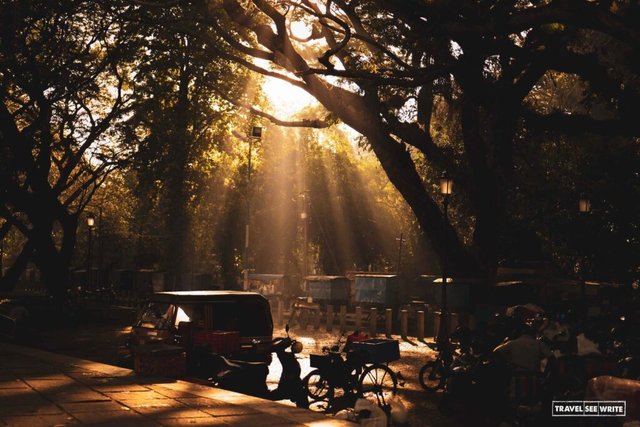
𝗘𝘅𝗽𝗹𝗼𝗿𝗲 𝘁𝗵𝗲 𝗦𝘁. 𝗙𝗿𝗮𝗻𝗰𝗶𝘀 𝗖𝗵𝘂𝗿𝗰𝗵.
Initially built in 1503, St. Francis Church is popularly known as the first church Europeans built in India and has enormous historical relevance. Interestingly, it has served as a Roman Catholic church, a Dutch Reformist church and an Anglican church during different eras depending on the European nation in power at each given time! St. Francis Church became a mecca for travel buffs worldwide because the Portuguese explorer Vasco Da Gama was first buried here after his death in Kochi in 1524.
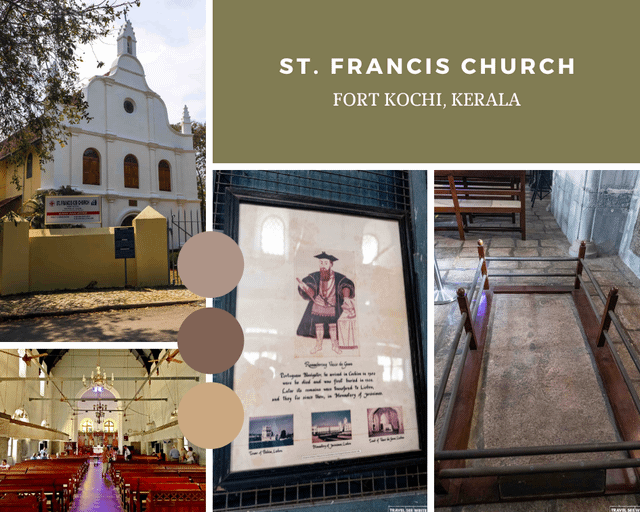
𝗩𝗶𝘀𝗶𝘁 𝘁𝗵𝗲 𝗿𝗲𝘀𝗶𝗱𝗲𝗻𝗰𝗲 𝗼𝗳 𝗩𝗮𝘀𝗰𝗼 𝗗𝗲 𝗚𝗮𝗺𝗮.
Behind the St. Francis Church on Rose Street is Vasco House, which is believed to have been the residence of the great Portuguese explorer, Vasco da Gama. Vasco House is one of the oldest Portuguese buildings in Fort Kochi, built in the early sixteenth century. Vasco House sports the typical European architecture – white paint, high wooden ceilings, old stone-staircase, large glass windows and balcony cum verandahs characteristic of those times. Today, Vasco House is converted into a homestay with all modern amenities and is owned by Santosh Tom. The story around the building has made it one of the top Instagramable spots in Fort Kochi.
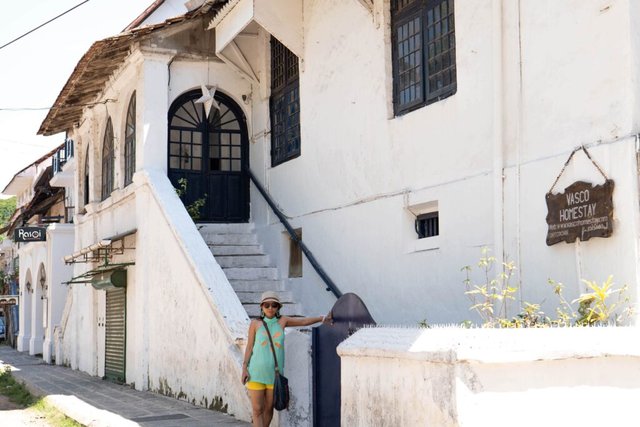
𝗦𝗮𝗻𝘁𝗮 𝗖𝗿𝘂𝘇 𝗕𝗮𝘀𝗶𝗹𝗶𝗰𝗮 – 𝗣𝗿𝗮𝘆 𝗮𝘁 𝗼𝗻𝗲 𝗼𝗳 𝘁𝗵𝗲 𝗼𝗹𝗱𝗲𝘀𝘁 𝗖𝗮𝘁𝗵𝗼𝗹𝗶𝗰 𝗖𝗵𝘂𝗿𝗰𝗵𝗲𝘀 𝗶𝗻 𝗜𝗻𝗱𝗶𝗮.
Located on Bastian Street, Santa Cruz Basilica is one of the oldest Catholic Churches in India and one of the eight basilicas in Kerala. It is one of the few buildings built by the Portuguese here that the Dutch spared. Later, demolished and rebuilt by the British in the 19th century, it was proclaimed a basilica by Pope John Paul II in 1984. Built originally in the gothic style by the Portuguese, it is an interesting piece of architecture and artistic grandeur – one of the must-see places for every visitor to the city!
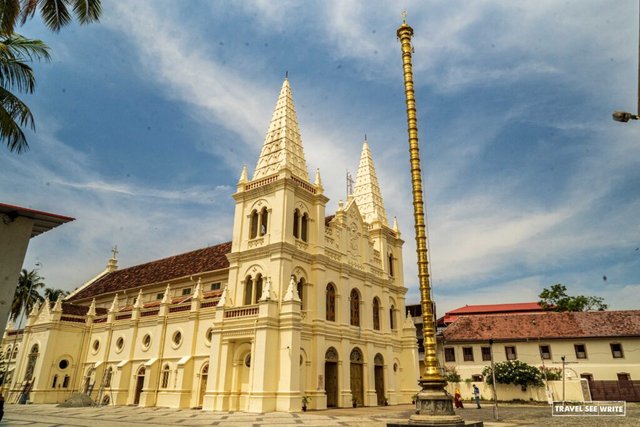
𝗚𝗼 𝗮𝗻𝘁𝗶𝗾𝘂𝗲 𝘀𝗵𝗼𝗽𝗽𝗶𝗻𝗴 𝗶𝗻 𝗝𝗲𝘄 𝗧𝗼𝘄𝗻.
Sandwiched between Mattancherry Palace and the 14th-century Paradesi Synagogue, Jew Town is a living testimony of Kochi’s rich Jewish legacy. Once a spice market, Jew Town today is an eye-catching touristy place in Kochi for those of you always on the lookout for antiques, quirky art pieces, handicrafts, jewellery, clothes, souvenirs, and fusion food for curious tourists. It’s a great shopping place in Kochi. The small market is full of stunning art pieces with a rich history and exciting stories.
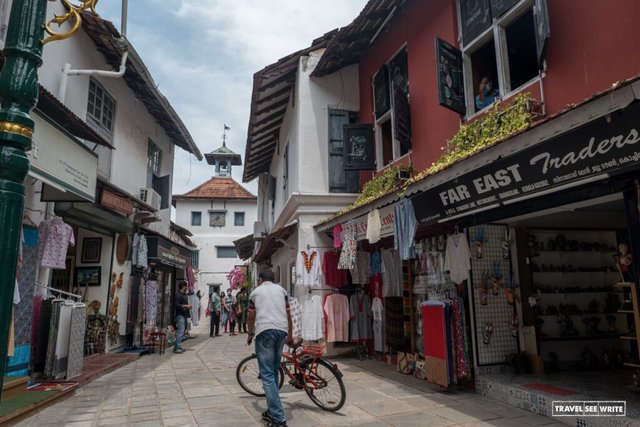
𝗣𝗮𝗿𝗮𝗱𝗲𝘀𝗶 𝗦𝘆𝗻𝗮𝗴𝗼𝗴𝘂𝗲 – 𝗮𝘁𝘁𝗲𝗻𝗱 𝗮 𝗺𝗮𝘀𝘀 𝗮𝘁 𝗼𝗻𝗲 𝗼𝗳 𝘁𝗵𝗲 𝗼𝗹𝗱𝗲𝘀𝘁 𝘀𝘆𝗻𝗮𝗴𝗼𝗴𝘂𝗲𝘀 𝗶𝗻 𝗜𝗻𝗱𝗶𝗮.
One of the most remarkable landmarks of Kochi is the 14th-century synagogue that is open to visitors every day except Fridays, Saturdays and any Jewish holiday. The Jewish synagogue was built in 1568, almost 1500 years after the beginning of the Jewish connection with Kerala. Like other buildings in Kochi, the synagogue was destroyed by the Portuguese in 1662 and then reconstructed two years later by the Dutch. Vijesh told me that Paradesi is one of the oldest synagogues in India that still holds mass. Kochi once had a large Jewish population that has been dwindling for decades, and in 2015 there were only 6 Jewish members left in the city.
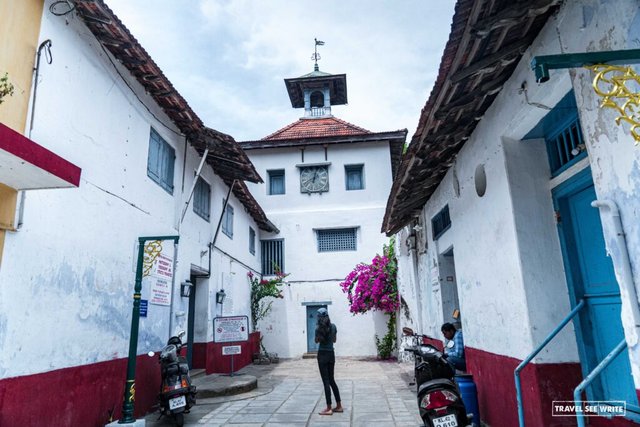
———
By Archana Singh/India, Kerala
Đăng bởi: Lan’s Lan’s


